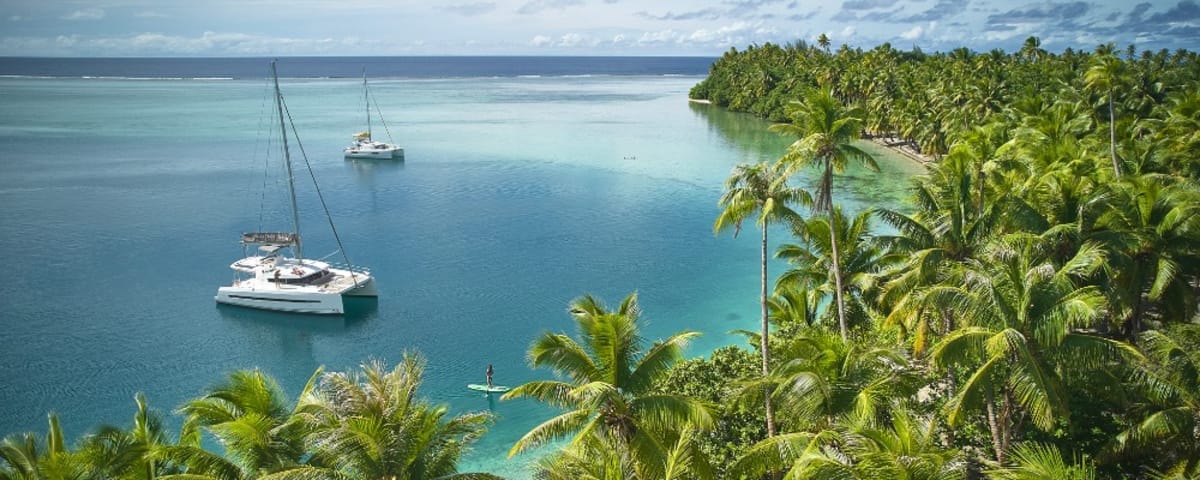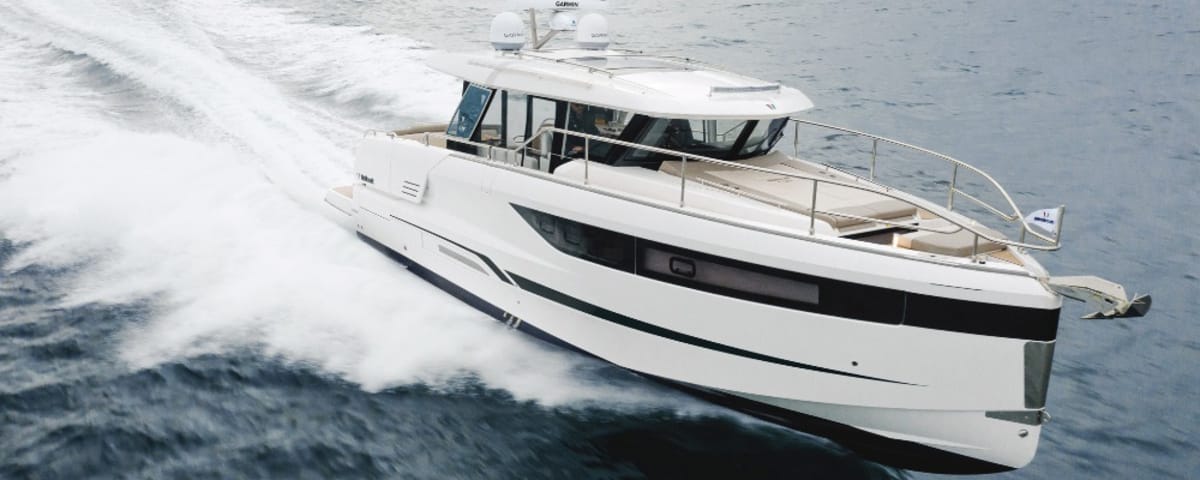A Trimaran Designed for Long Voyages
With its streamlined silhouette and foldable floats, the Dragonfly 40 clearly states its ambition: to offer fast, safe, and accessible sailing. Based on a sandwich construction using high-density Divinycell PVC foam, the central hull and floats ensure remarkable structural lightness, resulting in an excellent weight-to-volume ratio. This design choice promotes speed without compromising stability or robustness.
The Swing Wing folding system reduces the boat’s width when docked, facilitating access to standard ports. At sea, the trimaran takes full advantage of its deployed width to ensure healthy behavior, even in choppy conditions. The central daggerboard and lifting rudders allow for beaching or drying out on a beach, a rarity in this category of multihulls.
A Spacious and Well-Equipped Cockpit
Outside, the two-zone cockpit combines maneuvering space and relaxation area. The double helm station is equipped with padded seats, folding footrests, and a full set of controls: electric winches, bow thruster and windlass controls, 12-inch plotters, and navigation instrumentation. The four standard electric winches manage the sails – including folding the floats – effortlessly.
The rigging is designed to simplify adjustments: electric genoa furler, two single-line reefs on the mainsail, and genoa cars adjustable from the cockpit. The package is completed by a 40-horsepower Yanmar diesel engine, housed in an insulated compartment to limit noise and odor.
The exterior spaces are not to be outdone: trampolines aligned with the central deck, aft platforms with swim ladders, and a folding transom section to enlarge the cockpit at anchor. An anchoring system integrated into the carbon bowsprit completes the onboard equipment.
Interior: Volume, Light, and Modularity
Inside, the Dragonfly 40 features a bright, airy, and functional layout. The satin elm wood, used for all the furniture, adds a classic touch, enhanced by large side windows, numerous portholes, and six skylights.
The saloon features a folding table surrounded by two benches, convertible into a double berth to port and a single bed to starboard. The headroom reaches 1.95 m. The L-shaped galley extends over both sides, with generous worktops, high and low storage, and a well-thought-out center of gravity for cooking at sea.
The owner’s cabin at the rear is distinguished by its volume: large double berth, seat, ample storage, hull portholes, deck panel, and escape hatch providing effective natural ventilation. At the front, a double V-berth cabin also has storage, large openings, and a real space to change.
The bathroom is located at the foot of the companionway, in the center of the boat, and includes a sink, toilet, and integrated shower, with a side porthole and deck opening for more light and ventilation.
Versatility and Customization
Offered in four configurations – Touring, Ultimate, C Ultimate, and C Performance – the Dragonfly 40 adapts to both family use and sports sailing. Each unit is custom-built, according to the wishes of its future owner. Modularity is enhanced by the many options offered: additional hatches, specific storage systems for paddleboards, kayaks, dinghy, or outboard motor.
The Dragonfly 40 is positioned as a multihull designed to sail fast, far, and in good conditions. A well-developed platform, where the experience of Quorning Boats, founded in 1967, is fully expressed.
Technical Specifications – Touring Version:
- Overall length of central hull: 12.40m
- Waterline length of central hull: 11.60 m
- Length folded: 14.17 m
- Width in navigation: 8.40 m
- Width folded: 4 m
- Draft with daggerboard up: 0.70 m
- Draft with daggerboard down: 2.20 m
- Light displacement: 5800 kg
- Number of people: 8
- Inboard engine power: 40 hp / 27 kw
- Mast height, carbon, excluding antenna: 17 m
- Mainsail area: 62 m2
- Asymmetrical Spinnaker area: 110 m2
Enjoyed this post by Thibault Helle? Subscribe for more insights and updates straight from the source.


